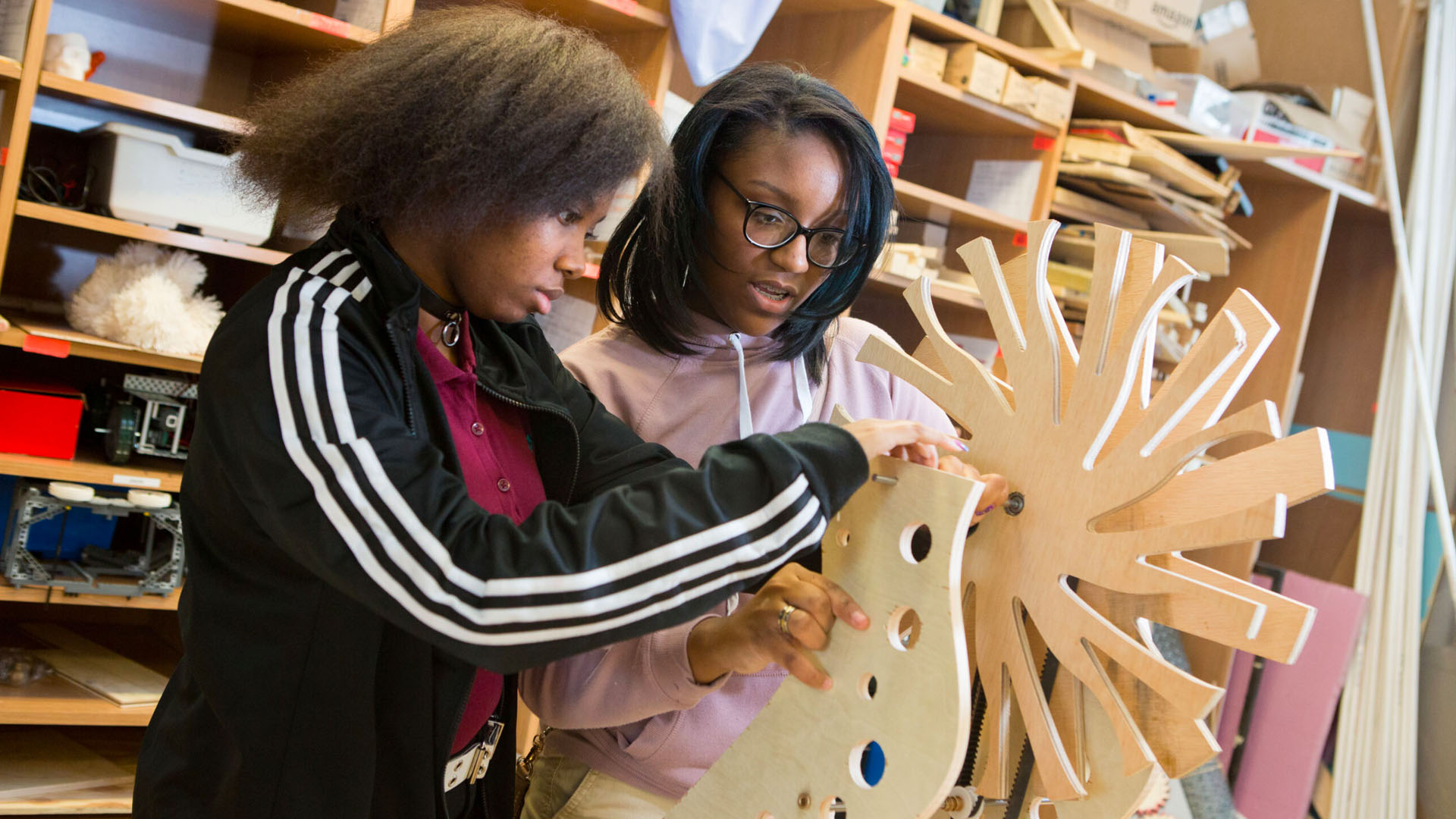One of my all-time favorite movies is Apollo 13. It celebrates the audacity, creativity, and hopefulness of humanity in a way that not many other films do. One of the best examples of that comes during the scene where NASA scientists on Earth are tasked with finding a way to fit a square-shaped filter into a round opening.
The scientists, having been given a limited number of supplies, a limited amount of time, and a seemingly impossible task, immediately get to work. They collaborate to find creative ways to solve a complex problem, even though the constraints seem near impossible to overcome.
In education, when we think of nurturing creativity, we often associate it with the freedom to think outside the box. However, there’s a paradoxical truth many educators and experts have come to realize – constraints can be the key to unlocking boundless creativity, especially in STEM (Science, Technology, Engineering, and Mathematics) education. Contrary to what you might expect, setting boundaries and limitations can foster resourcefulness, critical thinking, and collaboration, which are essential for success in a variety of career fields. Let’s take a look at some of the ways in which constraints can elevate these essential skills.
“Setting boundaries and limitations can foster resourcefulness, critical thinking, and collaboration, which are essential for success in a variety of career fields.”
Fostering Resourcefulness
Constraints play a pivotal role in fostering resourcefulness in STEM education. When students are confronted with limitations in the form of budget constraints, limited equipment or materials, or even time restrictions, they are pushed to think critically and creatively. For instance, in a robotics project with a limited budget, students must carefully plan their expenditures, explore cost-effective alternatives, and optimize their designs. This not only enhances their problem-solving abilities but also encourages resourcefulness in seeking innovative solutions within the confines of available resources.
Moreover, constraints in STEM education also mimic the real-world challenges professionals encounter in their careers. In industries like engineering and technology, professionals often face resource constraints, project deadlines, and the need to work efficiently. When students grapple with similar constraints in the classroom, they gain practical experience and learn to adapt, think outside the box, and optimize their approaches. This prepares them for the complexities of the STEM workforce, where resourcefulness is a valuable skill in overcoming limitations and driving innovation. Ultimately, constraints in STEM education serve as catalysts for developing not only technical expertise but also the ability to thrive in dynamic and resource-constrained environments.
Promoting Critical Thinking

When students encounter limitations or restrictions, they are compelled to analyze problems from various angles, explore alternative solutions, and make informed decisions. For example, when tasked with designing an experiment within a limited budget, students must critically evaluate their research objectives and prioritize which equipment or materials are essential for achieving their goals. This necessitates a deep understanding of the scientific principles involved and the ability to make strategic choices, fostering critical thinking skills.
Furthermore, constraints in STEM education encourage students to develop hypotheses, test assumptions, and refine their approaches through iterative problem-solving. When faced with real-world limitations, such as time constraints in a coding project or space limitations in a design challenge, students must think critically to optimize their strategies and streamline their processes. They learn to weigh the pros and cons of different solutions, identify potential pitfalls, and adapt their methods as needed. These experiences not only nurture their analytical thinking but also equip them with the resilience and adaptability required to tackle complex problems in STEM fields effectively. In essence, constraints in STEM education serve as catalysts for cultivating the critical thinking skills that are fundamental to success in science and technology-related disciplines.
Encouraging Collaboration
When students are faced with limitations, such as tight deadlines or restricted resources, they often find that working together becomes not just beneficial but essential. In team-based STEM projects, students are required to pool their collective knowledge, skills, and creativity to overcome constraints effectively. For example, in a robotics competition with limited components, collaboration is essential as team members need to combine their expertise in mechanics, electronics, and programming to design a functional robot that can achieve the desired tasks. This collaborative problem-solving fosters communication and cooperation among students, teaching them the importance of teamwork in achieving common goals.
Moreover, constraints in STEM education often mirror real-world scenarios where interdisciplinary collaboration is crucial. In fields like engineering and information technology, professionals from various backgrounds must work together to innovate and solve complex challenges. By simulating constraints within the classroom, educators prepare students for these collaborative experiences. Students learn to appreciate diverse perspectives and integrate different skill sets, creating a synergy that is essential for addressing multifaceted STEM problems. This collaborative mindset not only enhances their ability to work effectively in STEM careers but also promotes an inclusive and cooperative approach to solving complex global challenges that often require interdisciplinary solutions.
“Students learn to appreciate diverse perspectives and integrate different skill sets, creating a synergy that is essential for addressing multifaceted STEM problems.”
Conclusion
In the world of STEM education, constraints are not barriers but gateways to creativity, problem-solving, and innovation. By introducing limitations into the learning process, educators can help students develop the skills and mindset needed to excel in STEM fields. Embracing constraints not only prepares students for the challenges of the real world but also empowers them to become the creative thinkers and innovators of tomorrow. So, let’s remember that sometimes, the path to unlocking creativity is through the very constraints which surround us.
Resources
Please login or register to claim PGPs.
Alternatively, you may use the PGP Request Form if you prefer to not register an account.



